Italian agronomist-turned-detective Isabella Dalla Ragione hunts in abandoned gardens and orchards for forgotten fruits, preserving Italy’s agricultural heritage and saving varieties which could help farmers withstand the vagaries of a changing climate.
The 68-year-old’s collection of apples, pears, cherries, plums, peaches and almonds, grown using methods of old, are more resilient to the climate shifts and extremes seen increasingly frequently in the southern Mediterranean.
Ragione seeks descriptions of bygone local fruits in centuries-old diaries or farming documents, and sets out to find them.
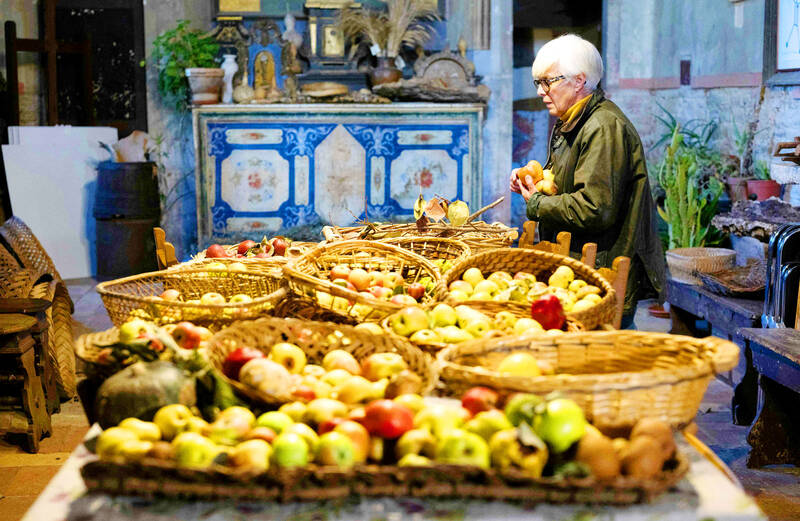
Photo: AFP
Others she identifies by matching them to fruits in Renaissance paintings, where they often appear in depictions of the Madonna and Child.
Of the 150 or so varieties collected from Tuscany, Umbria, Emilia-Romagna and Marche and grown by her non-profit Archeologia Arborea foundation, the small, round Florentine pear is among Ragione’s favorites.
“I’d found it described in documents from the 1500s, but I’d never seen it and believed it lost,” she said.
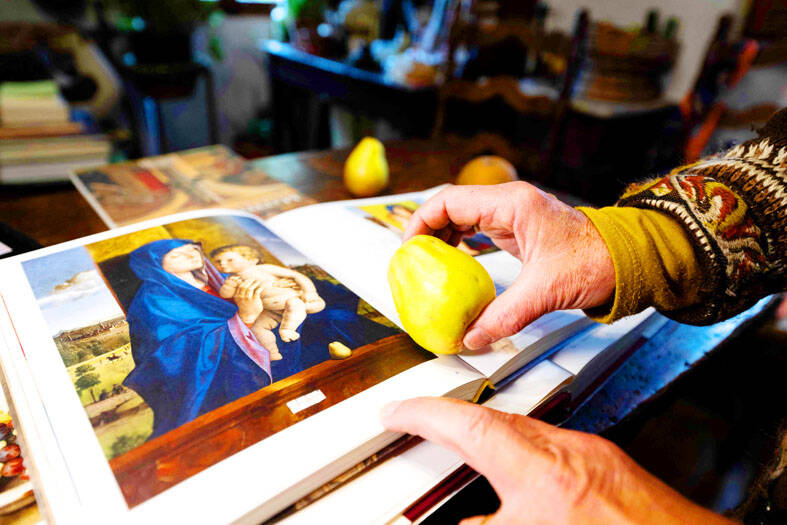
hoto: AFP
“Then 15 years ago, in the mountains between Umbria and Marche, I found a tree almost in the middle of the woods,” she said, adding that an elderly local woman told her about it by chance.
While old varieties are flavorsome, most disappeared from markets and tables after World War II as Italy’s agricultural system modernized.
Italy is a large fruit producer. Its pear production ranks first in Europe and third globally, but just five modern varieties — none of which are Italian — account for more than 80 percent of its output.
“There used to be hundreds, even thousands, of varieties, because each region, each valley, each place had its own,” Ragione said as she showed off wicker baskets full of fruit, stored in a little church near the orchard.
Modern markets instead demand large crops of fruits that can be harvested quickly, easily stored and last a long time.
As global warming makes for an increasingly challenging climate, experts said a broader range of plant genetic diversity is key.
“Heirloom varieties... are able to adapt to climate change, to more severe water shortages, to extremes of cold and heat,” UN Food and Agriculture Organization climate change division technical officer Mario Marino said. “However, a much more severe disease arrives, one that improved varieties are normally more resistant to... and the local varieties perish, or perhaps don’t produce fruit.”
The answer lies in creating new varieties by crossing modern and old-fashioned ones, he said.
Marino, who advises Ragione’s foundation, said her work was “urgent,” because “preserving one’s heritage means preserving the land, preserving biodiversity... and [allowing] us to use that DNA for new genetic resources.”
Ragione also recreates historical gardens which could host recovered varieties as part of an EU-funded project.
“We don’t do all this research and conservation work out of nostalgia, out of romanticism,” she said as she harvested pink apples from her trees in the hilly hamlet of San Lorenzo di Lerchi in Umbria. “We do it because when we lose variety, we lose food security, we lose diversity and the system’s ability to respond to various changes, and we also lose a lot in cultural terms.”
Ragione has sought answers to fruit mysteries in monastery orchards, the gardens of nobility and common allotments. She has pored over local texts from the 16th and 17th centuries.
She once traced a pear to a village in southern Umbria after reading about it in the diary of a musical band director, but one of her richest sources on how best to cultivate such varieties has been oral testimonies — and as the last generation of farmers that grew the crops die, much local knowledge is lost.
That has made it difficult to know how to divide her time between researching and looking for a new variety, although she has learnt the hard way that the urgency “is always to save it.”
“In the past if I’ve delayed, thinking ‘I’ll do it next year,’ I’ve found the plant has since gone,” she said.
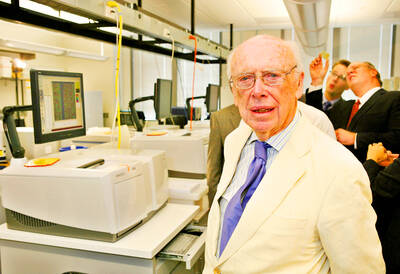
James Watson — the Nobel laureate co-credited with the pivotal discovery of DNA’s double-helix structure, but whose career was later tainted by his repeated racist remarks — has died, his former lab said on Friday. He was 97. The eminent biologist died on Thursday in hospice care on Long Island in New York, announced the Cold Spring Harbor Laboratory, where he was based for much of his career. Watson became among the 20th century’s most storied scientists for his 1953 breakthrough discovery of the double helix with researcher partner Francis Crick. Along with Crick and Maurice Wilkins, he shared the
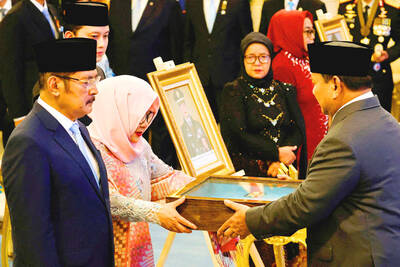
OUTRAGE: The former strongman was accused of corruption and responsibility for the killings of hundreds of thousands of political opponents during his time in office Indonesia yesterday awarded the title of national hero to late president Suharto, provoking outrage from rights groups who said the move was an attempt to whitewash decades of human rights abuses and corruption that took place during his 32 years in power. Suharto was a US ally during the Cold War who presided over decades of authoritarian rule, during which up to 1 million political opponents were killed, until he was toppled by protests in 1998. He was one of 10 people recognized by Indonesian President Prabowo Subianto in a televised ceremony held at the presidential palace in Jakarta to mark National
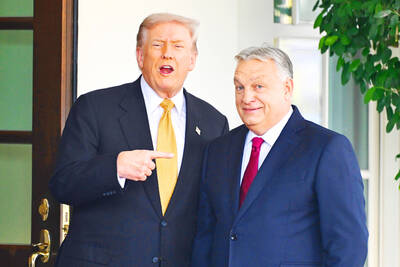
US President Donald Trump handed Hungarian Prime Minister Viktor Orban a one-year exemption from sanctions for buying Russian oil and gas after the close right-wing allies held a chummy White House meeting on Friday. Trump slapped sanctions on Moscow’s two largest oil companies last month after losing patience with Russian President Vladimir Putin over his refusal to end the nearly four-year-old invasion of Ukraine. However, while Trump has pushed other European countries to stop buying oil that he says funds Moscow’s war machine, Orban used his first trip to the White House since Trump’s return to power to push for

LANDMARK: After first meeting Trump in Riyadh in May, al-Sharaa’s visit to the White House today would be the first by a Syrian leader since the country’s independence Syrian President Ahmed al-Sharaa arrived in the US on Saturday for a landmark official visit, his country’s state news agency SANA reported, a day after Washington removed him from a terrorism blacklist. Sharaa, whose rebel forces ousted long-time former Syrian president Bashar al-Assad late last year, is due to meet US President Donald Trump at the White House today. It is the first such visit by a Syrian president since the country’s independence in 1946, according to analysts. The interim leader met Trump for the first time in Riyadh during the US president’s regional tour in May. US envoy to Syria Tom Barrack earlier